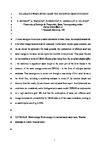Co-located wave-wind farms for improved O&M efficiency
| dc.contributor.author | Astariz, S | |
| dc.contributor.author | Vazquez, A | |
| dc.contributor.author | Sanchez, M | |
| dc.contributor.author | Carballo, R | |
| dc.contributor.author | Iglesias, Gregorio | |
| dc.date.accessioned | 2018-06-08T10:09:18Z | |
| dc.date.issued | 2018-09-01 | |
| dc.identifier.issn | 0964-5691 | |
| dc.identifier.issn | 1873-524X | |
| dc.identifier.uri | http://hdl.handle.net/10026.1/11627 | |
| dc.description.abstract |
If ocean energy is to become a viable alternative to fossil fuels, its competitiveness vis9 à-vis other energy sources must be enhanced. Furthermore, marine space is scarce, and its use should be optimised. On these grounds, the combination of offshore wind and wave energy in the same marine space (co-located) holds promise. This paper focuses on the benefits in terms of O&M efficiency that ensue from the so-called shadow effect – the reduction in significant wave height in the inner part of the farm thanks to the presence of the wave energy converters (WECs) – in the form of enlarged weather windows. This investigation is carried out through a case study of four wind farms in the North Sea, including a sensitivity analysis in terms of: (i) location (depth and distance from the coast), (ii) sea climate, and (iii) wind farm layout. Real (observed) sea conditions are considered, and a third-generation wave model (SWAN) is implemented on a high-resolution grid. We find that the combination of wave and offshore wind energy increases the accessibility for O&M tasks in all the cases considered, leading to accessibility values of up to 82%. | |
| dc.format.extent | 66-71 | |
| dc.language | en | |
| dc.language.iso | en | |
| dc.publisher | Elsevier | |
| dc.subject | Wave energy | |
| dc.subject | Wind energy | |
| dc.subject | Co-located wind-wave farm | |
| dc.subject | Weather windows for O&M | |
| dc.subject | Shadow effect | |
| dc.title | Co-located wave-wind farms for improved O&M efficiency | |
| dc.type | journal-article | |
| dc.type | Journal Article | |
| plymouth.author-url | https://www.webofscience.com/api/gateway?GWVersion=2&SrcApp=PARTNER_APP&SrcAuth=LinksAMR&KeyUT=WOS:000444793600007&DestLinkType=FullRecord&DestApp=ALL_WOS&UsrCustomerID=11bb513d99f797142bcfeffcc58ea008 | |
| plymouth.volume | 163 | |
| plymouth.publication-status | Published | |
| plymouth.journal | Ocean and Coastal Management | |
| dc.identifier.doi | 10.1016/j.ocecoaman.2018.04.010 | |
| plymouth.organisational-group | /Plymouth | |
| plymouth.organisational-group | /Plymouth/Faculty of Science and Engineering | |
| plymouth.organisational-group | /Plymouth/Research Groups | |
| plymouth.organisational-group | /Plymouth/Research Groups/Marine Institute | |
| plymouth.organisational-group | /Plymouth/Users by role | |
| dcterms.dateAccepted | 2018-04-09 | |
| dc.rights.embargodate | 2019-6-18 | |
| dc.identifier.eissn | 1873-524X | |
| dc.rights.embargoperiod | 12 months | |
| rioxxterms.versionofrecord | 10.1016/j.ocecoaman.2018.04.010 | |
| rioxxterms.licenseref.uri | http://www.rioxx.net/licenses/under-embargo-all-rights-reserved | |
| rioxxterms.licenseref.startdate | 2018-09-01 | |
| rioxxterms.type | Journal Article/Review |


